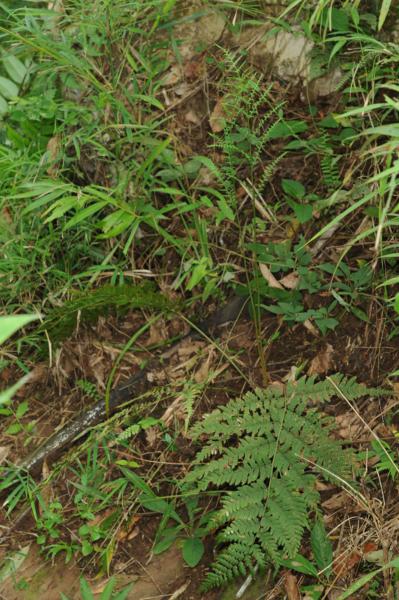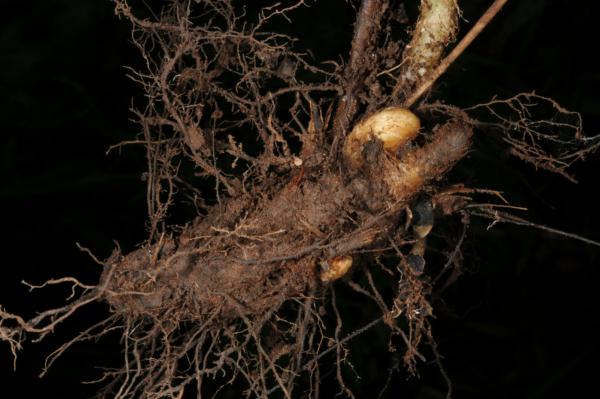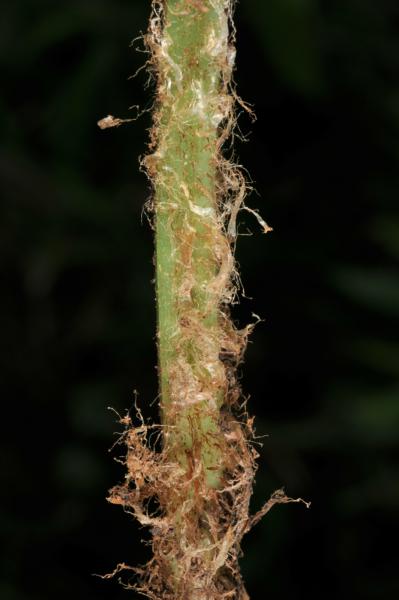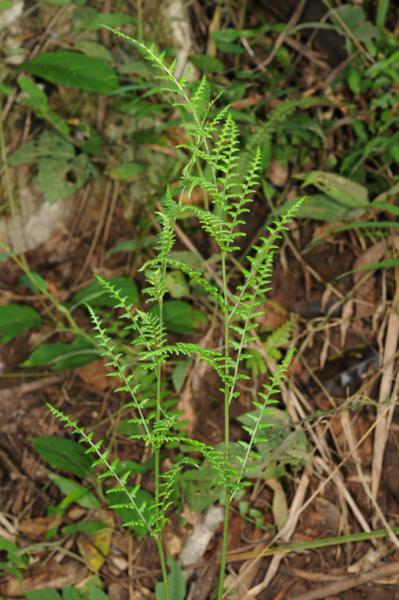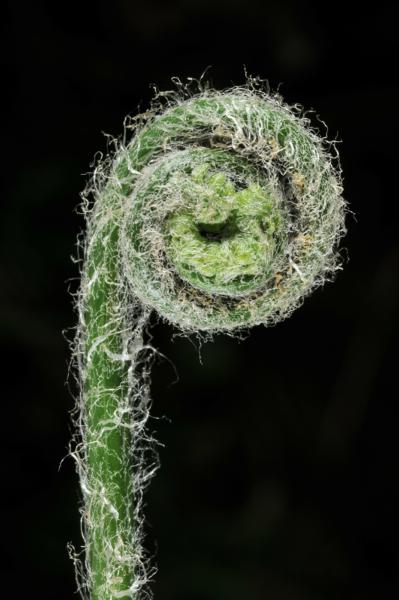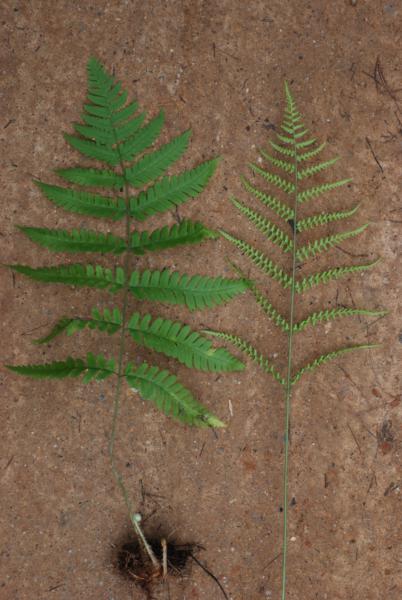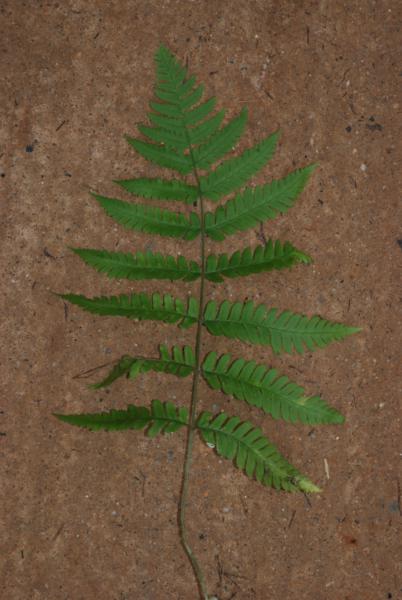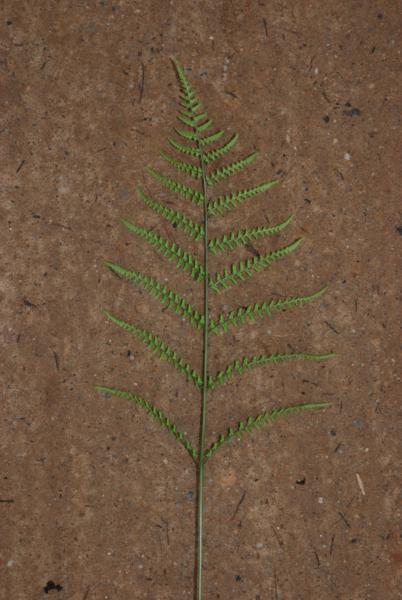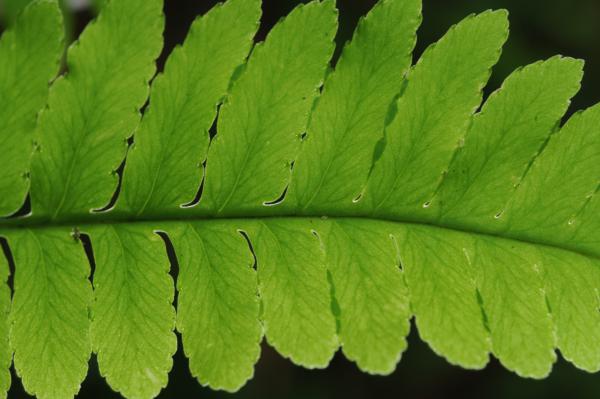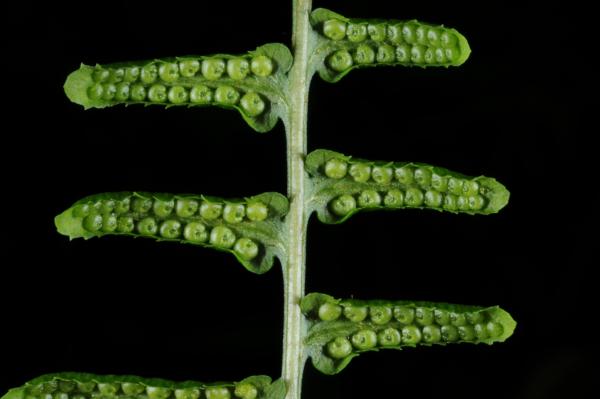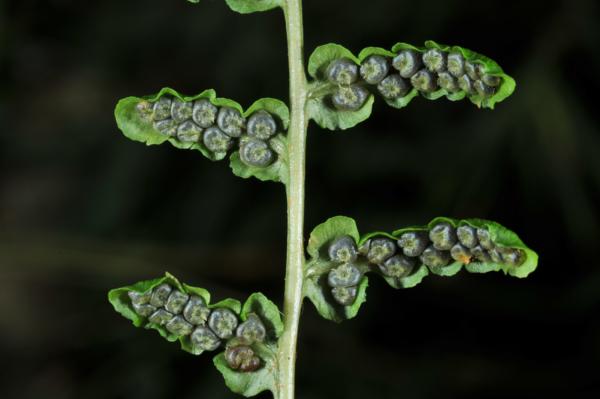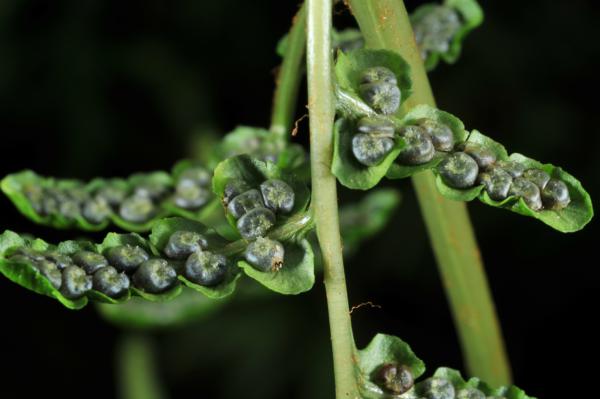
Dryopteris cochleata (D.Don) C.Chr.
Family
Dryopteridaceae
Nomenclature
Dryopteris cochleata (D.Don) C.Chr., Index Filic.: 258. 1905; Ching, Bull. Fan Mem. Inst. Biol. 8: 434. 1938; Tardieu & C.Chr., Fl. Indo-Chine 7(2): 312. 1941; Holttum, Dansk Bot. Ark. 20: 30. 1961; Tagawa & K.Iwats., SouthE. Asian Stud. 5: 95. 1967; Tagawa & K.Iwats., Fl. Thailand 3: 347, f. 31.3–31.7. 1988; Boonkerd & Pollawatn, Pterid. Thailand: 157, 158, 202. 2000. – Nephrodium cochleatum D.Don, Prodr. Fl. Nepal.: 6. 1825. – Lastrea filix-mas var. cochleata (D.Don) Bedd., Handb. Ferns Brit. India: 250, f. 130. 1883.
Description
Rhizome short creeping; scales light brown, linear, entire, about 10 by 1 mm. Stipes stramineous, up to 30 cm in sterile and 50 cm in fertile fronds, densely scaly at base, sparsely clad with linear scales. Frond bipinnate, distinctly dimorphic; sterile lamina oblong-subdeltoid, acuminate at apex, up to 45 by 30 cm; rachis glabrescent or minutely scaly, grooved above; lateral pinnae up to 10 pairs, basal pinnae the largest or slightly smaller than the next above, slightly falcate, oblong-lanceolate, caudately acuminate at apex, narrowing towards stalked base, pinnate, up to 25 by 7 cm; pinna-rachis grooved above, winged throughout; pinnules oblong, falcate, acute to moderately acute at apex, up to 4 by 1.3 cm, shallowly lobed at margin; lobes oblique, slightly toothed; herbaceous to softly papyraceous, light green, glabrous, veins bipinnate; fertile lamina oblong or narrowly subdeltoid, up to 50 by 15 cm; pinnae ascending, linear, up to 10 by 1.5 cm; pinnules oblong, round at apex, truncate and shortly stalked or adnate at base, up to 10 by 5 mm; veins pinnate, veinlets simple or forked. Sori in one row between midrib and margin; indusia large, up to 2 mm diam., very close to each other or slightly imbricate, glabrous .
Distribution in Thailand
NORTHERN: Mae Hong Son, Chiang Mai, Chiang Rai, Lamphun, Tak; NORTH-EASTERN: Loei.
Wider Distribution
Himalayas, Burma, S China, Philippines and E Java.
Ecology
On clayey or rather dry slopes in not so dense forests at low to medium altitudes, fairly common in North, especially in the mixed forests.
Proposed IUCN Conservation Assessment
Least Concern (LC). This species is widespread and not under any known threat.
Voucher specimens - Thailand
Middleton et al. 4879, Chiang Mai, Doi Inthanon National Park (E); Middleton et al. 5128, Loei, Phu Suan Sai (E).
Habit
Rhizome
Stipe
Fertile fronds
Crozier
Sterile and fertile fronds
Sterile frond
Fertile frond
Upper surface of frond
Young sori
Sori
Sori
Site hosted by the Royal Botanic Garden Edinburgh. Content managed by Stuart Lindsay, Gardens by the Bay, Singapore and David Middleton, Singapore Botanic Gardens. Last updated 24 January 2012
